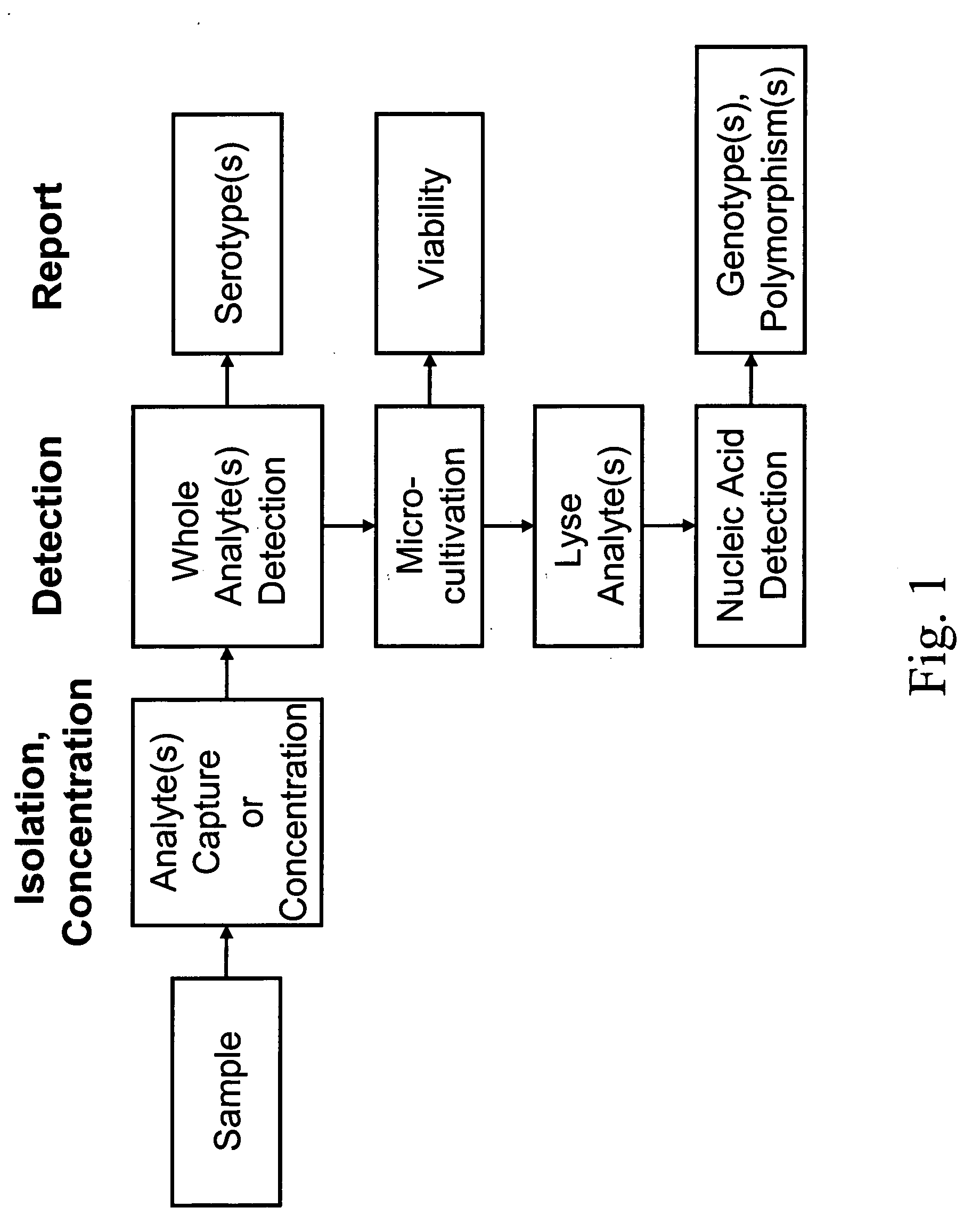Integrated multistep bioprocessor and sensor
a bioprocessor and sensor technology, applied in the field of biological particle processing methods and processing methods, can solve the problems of large number of non-anthracis colonies, difficult to detect small numbers of pathogens, and difficult to detect small numbers of microorganisms
- Summary
- Abstract
- Description
- Claims
- Application Information
AI Technical Summary
Problems solved by technology
Method used
Image
Examples
example i
Cell Capture, Growth and Detection Using a Combined Immunological-Amplification Biosensor
[0274] This Example describes detection of water-borne E. coli using an integrated biosensor for the capture, growth and PCR amplification of bacteria analytes.
[0275] Enterohemorrhagic E. coli (e.g., E. coli O157:H7) has emerged as a serious problem in developed countries. This strain is one of the most common serotype of enterohemorrhagic E. coli (EHEC), and is responsible for numerous food-borne and water-borne infections worldwide. Symptoms include bloody diarrhea and kidney failure, which can be fatal. Enterohemorrhagic E. coli strains may be candidates for bioterrorism agents because of their virulence and the very small infectious dose. Epidemiological data suggests that consumption of relatively few cells (ca. 10) can result in infection. Traditional methods for detection of E. coli O157:H7, which rely on enrichment, plating on selective media, and identification via biochemical / serolog...
PUM
| Property | Measurement | Unit |
|---|---|---|
| Capillary wave | aaaaa | aaaaa |
| Flow rate | aaaaa | aaaaa |
| Structure | aaaaa | aaaaa |
Abstract
Description
Claims
Application Information
 Login to View More
Login to View More - R&D
- Intellectual Property
- Life Sciences
- Materials
- Tech Scout
- Unparalleled Data Quality
- Higher Quality Content
- 60% Fewer Hallucinations
Browse by: Latest US Patents, China's latest patents, Technical Efficacy Thesaurus, Application Domain, Technology Topic, Popular Technical Reports.
© 2025 PatSnap. All rights reserved.Legal|Privacy policy|Modern Slavery Act Transparency Statement|Sitemap|About US| Contact US: help@patsnap.com



